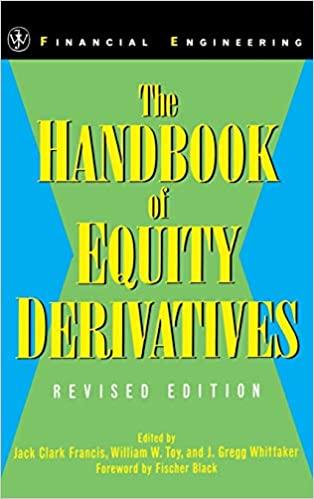Answered step by step
Verified Expert Solution
Question
1 Approved Answer
d.light: How Bringing Its Business Plan to Life Helped a Social Enterprise Get Off to a Strong Start -Web: dlightdesign.com Facebook: D.lightDesign - Twitter: @dlightdesign
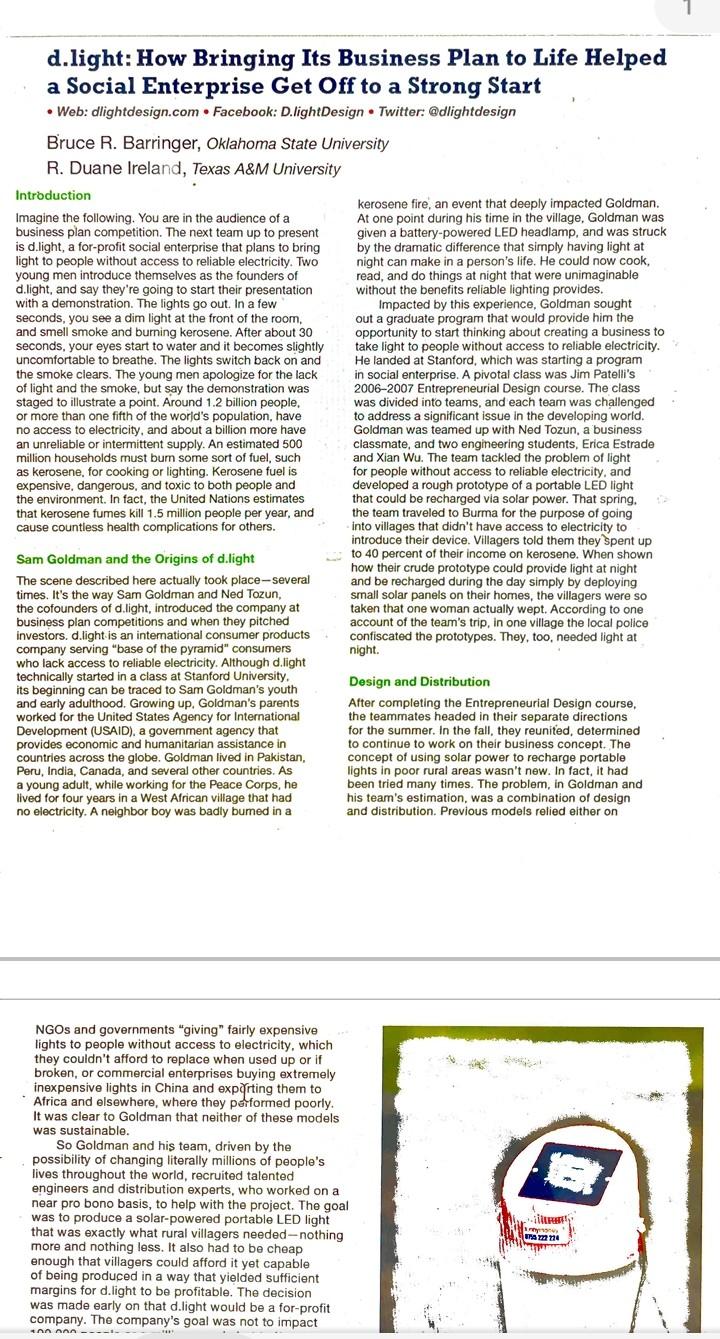
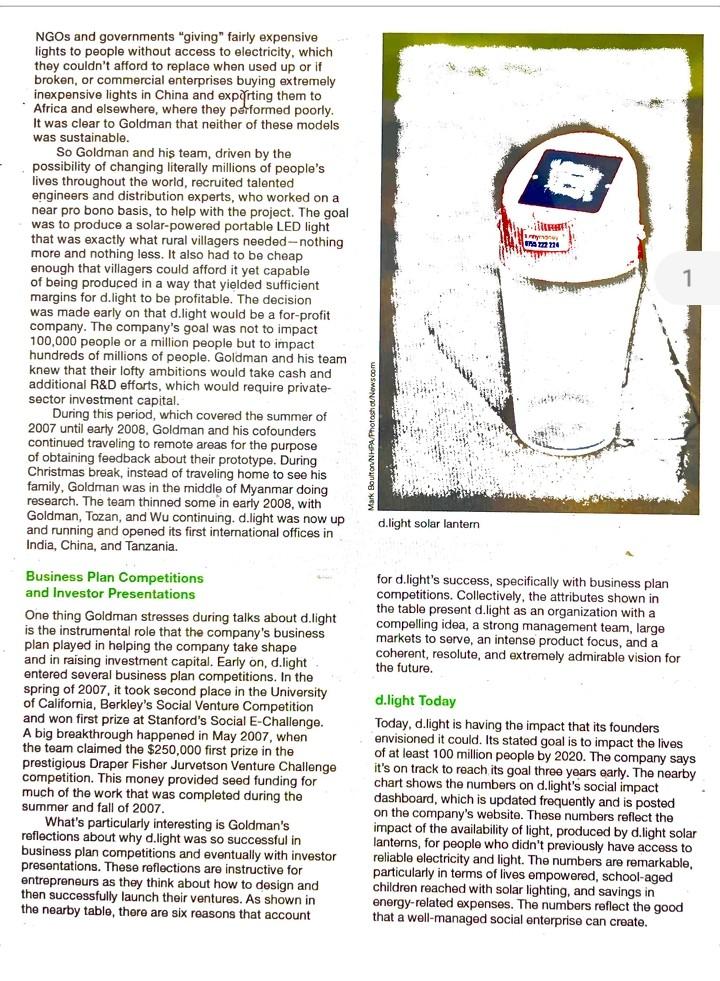
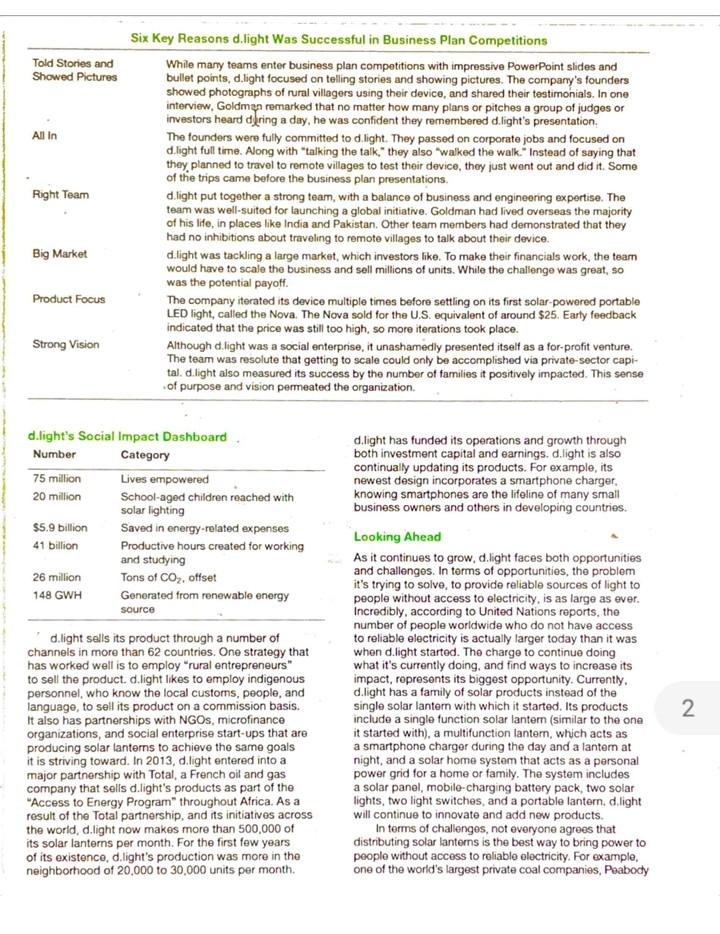
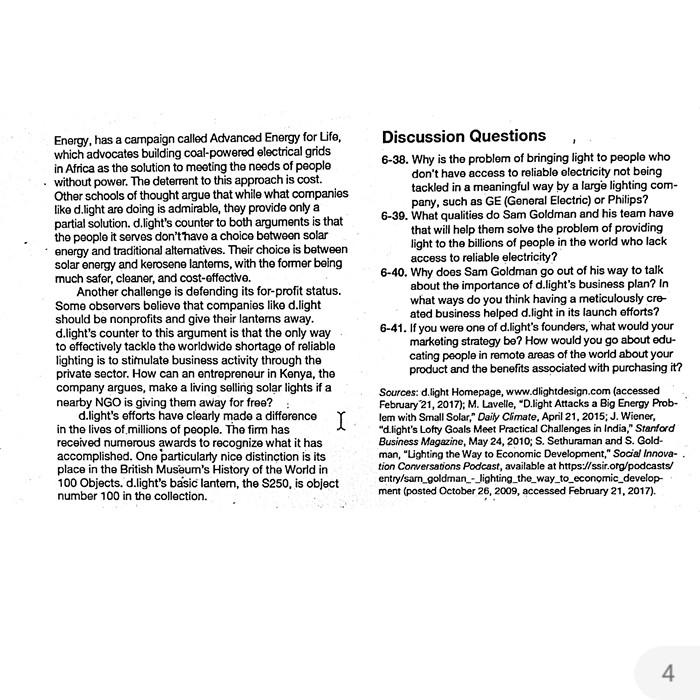
d.light: How Bringing Its Business Plan to Life Helped a Social Enterprise Get Off to a Strong Start -Web: dlightdesign.com Facebook: D.lightDesign - Twitter: @dlightdesign Bruce R. Barringer, Oklahoma State University R. Duane Ireland, Texas A\&M University NGOs and governments "giving" fairly expensive lights to people without access to electricity, which they couldn't afford to replace when used up or if broken, or commercial enterprises buying extremely inexpensive lights in China and expyrting them to Africa and elsewhere, where they petformed poorly. It was clear to Goldman that neither of these models was sustainable. So Goldman and his team, driven by the possibility of changing literally millions of people's lives throughout the world, recruited talented engineers and distribution experts, who worked on a near pro bono basis, to help with the project. The goal was to produce a solar-powered portable LED light that was exactly what rural villagers needed-nothing more and nothing less. It also had to be cheap enough that villagers could afford it yet capable of being produced in a way that yielded sufficient margins for d.light to be profitable. The decision was made early on that d.light would be a for-profit company. The company's goal was not to impact NGOs and governments "giving" fairly expensive lights to people without access to electricity, which they couldn't afford to replace when used up or if broken, or commercial enterprises buying extremely inexpensive lights in China and expyrting them to Africa and elsewhere, where they petformed poorly. It was clear to Goldman that neither of these models was sustainable. So Goldman and his team, driven by the possibility of changing literally millions of people's lives throughout the world, recruited talented engineers and distribution experts, who worked on a near pro bono basis, to help with the project. The goal was to produce a solar-powered portable LED light that was exactly what rural villagers needed-nothing more and nothing less. It also had to be cheap enough that villagers could afford it yet capable margins for d.light to be profitable. The decision was made early on that d.light would be a for-profit company. The company's goal was not to impact 100,000 people or a million people but to impact hundreds of millions of people. Goldman and his team knew that their lofty ambitions would take cash and sector investment capital. and running and opened its first intemational offices in India, China, and Tanzania. BusinessPlanCompetitionsandInvestorPresentationsOnethingGoldmanstressesduringtalksaboutd.lightistheinstrumentalrolethatthecompanysbusinessplanplayedinhelpingthecompanytakeshapeandinraisinginvestmentcapital.Earlyon,d.lightford.lightssuccess,specificallywithbusinessplancompetitions.Collectively,theattributesshowninthetablepresentd.lightasanorganizationwithacompellingidea,astrongmanagementteam,largecoherent,resolute,andextremelyadmirablevisionforcoheranintenseproductfocus,anda entered several business plan competitions. In the the future. spring of 2007 , it took second place in the University of California, Berkley's Social Venture Competition d.light Today and won first prize at Stanford's Social E-Challenge. Today, dight is having the impact that its founders AbigbreakthroughhappenedinMay2007,whentheteamclaimedthe$250,000firstprizeintheprestigigusDraperFisherJurvetsonVentureChallengeenvisioneditcould.Itsstatedgoalistoimpactthelivesofatleast100millionpeopleby2020.Thecompanysaysitsontracktoreachitsgoalthreeyearsearly.Thenearby competition. This money provided seed funding for _. chart shows the numbers on d.light's social impact muchoftheworkthatwascompletedduringthesummerandfallof2007.dashboard,whichisupdatedfrequentlyandispostedonthecompanyswebsite.Thesenumbersreflectthe on the company's website. These numbers reflect the reflections about why d.light was so successful in lanterns, for people who didn't previously have access to business plan competitions and eventually with investor reliable electricity and light. The numbers are remarkable, presentations. These reflections are instructive for entrepreneurs as they think about how to design and particularly in terms of lives empowered, school-agec the nearby table, there are six ventures. As shown in energy-related expenses. The numbers reflect the good that a well-managed social enterprise can create. Six Key Reasons d.light Was Successful in Business Plan Competitions d.light: How Bringing Its Business Plan to Life Helped a Social Enterprise Get Off to a Strong Start -Web: dlightdesign.com Facebook: D.lightDesign - Twitter: @dlightdesign Bruce R. Barringer, Oklahoma State University R. Duane Ireland, Texas A\&M University NGOs and governments "giving" fairly expensive lights to people without access to electricity, which they couldn't afford to replace when used up or if broken, or commercial enterprises buying extremely inexpensive lights in China and expyrting them to Africa and elsewhere, where they petformed poorly. It was clear to Goldman that neither of these models was sustainable. So Goldman and his team, driven by the possibility of changing literally millions of people's lives throughout the world, recruited talented engineers and distribution experts, who worked on a near pro bono basis, to help with the project. The goal was to produce a solar-powered portable LED light that was exactly what rural villagers needed-nothing more and nothing less. It also had to be cheap enough that villagers could afford it yet capable of being produced in a way that yielded sufficient margins for d.light to be profitable. The decision was made early on that d.light would be a for-profit company. The company's goal was not to impact NGOs and governments "giving" fairly expensive lights to people without access to electricity, which they couldn't afford to replace when used up or if broken, or commercial enterprises buying extremely inexpensive lights in China and expyrting them to Africa and elsewhere, where they petformed poorly. It was clear to Goldman that neither of these models was sustainable. So Goldman and his team, driven by the possibility of changing literally millions of people's lives throughout the world, recruited talented engineers and distribution experts, who worked on a near pro bono basis, to help with the project. The goal was to produce a solar-powered portable LED light that was exactly what rural villagers needed-nothing more and nothing less. It also had to be cheap enough that villagers could afford it yet capable margins for d.light to be profitable. The decision was made early on that d.light would be a for-profit company. The company's goal was not to impact 100,000 people or a million people but to impact hundreds of millions of people. Goldman and his team knew that their lofty ambitions would take cash and sector investment capital. and running and opened its first intemational offices in India, China, and Tanzania. BusinessPlanCompetitionsandInvestorPresentationsOnethingGoldmanstressesduringtalksaboutd.lightistheinstrumentalrolethatthecompanysbusinessplanplayedinhelpingthecompanytakeshapeandinraisinginvestmentcapital.Earlyon,d.lightford.lightssuccess,specificallywithbusinessplancompetitions.Collectively,theattributesshowninthetablepresentd.lightasanorganizationwithacompellingidea,astrongmanagementteam,largecoherent,resolute,andextremelyadmirablevisionforcoheranintenseproductfocus,anda entered several business plan competitions. In the the future. spring of 2007 , it took second place in the University of California, Berkley's Social Venture Competition d.light Today and won first prize at Stanford's Social E-Challenge. Today, dight is having the impact that its founders AbigbreakthroughhappenedinMay2007,whentheteamclaimedthe$250,000firstprizeintheprestigigusDraperFisherJurvetsonVentureChallengeenvisioneditcould.Itsstatedgoalistoimpactthelivesofatleast100millionpeopleby2020.Thecompanysaysitsontracktoreachitsgoalthreeyearsearly.Thenearby competition. This money provided seed funding for _. chart shows the numbers on d.light's social impact muchoftheworkthatwascompletedduringthesummerandfallof2007.dashboard,whichisupdatedfrequentlyandispostedonthecompanyswebsite.Thesenumbersreflectthe on the company's website. These numbers reflect the reflections about why d.light was so successful in lanterns, for people who didn't previously have access to business plan competitions and eventually with investor reliable electricity and light. The numbers are remarkable, presentations. These reflections are instructive for entrepreneurs as they think about how to design and particularly in terms of lives empowered, school-agec the nearby table, there are six ventures. As shown in energy-related expenses. The numbers reflect the good that a well-managed social enterprise can create. Six Key Reasons d.light Was Successful in Business Plan Competitions
Step by Step Solution
There are 3 Steps involved in it
Step: 1

Get Instant Access to Expert-Tailored Solutions
See step-by-step solutions with expert insights and AI powered tools for academic success
Step: 2

Step: 3

Ace Your Homework with AI
Get the answers you need in no time with our AI-driven, step-by-step assistance
Get Started


